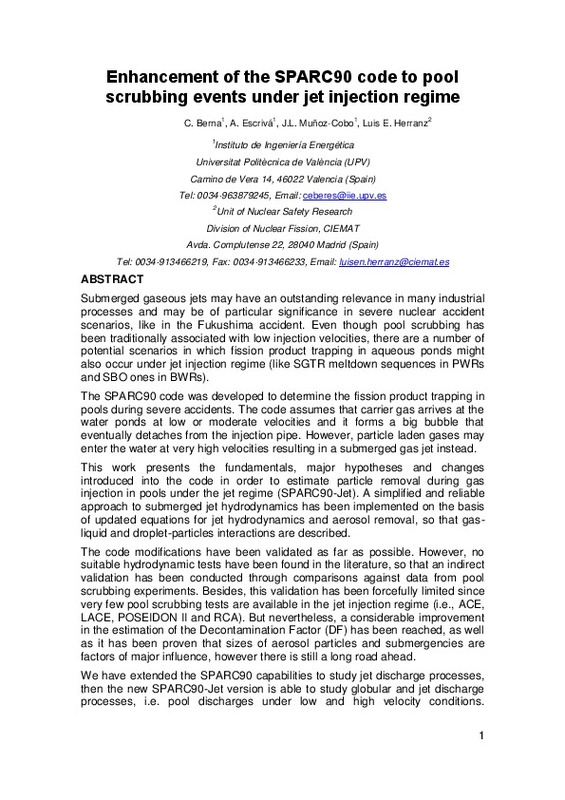JavaScript is disabled for your browser. Some features of this site may not work without it.
Buscar en RiuNet
Listar
Mi cuenta
Estadísticas
Ayuda RiuNet
Admin. UPV
Enhancement of the SPARC90 code to pool scrubbing events under jet injection regime
Mostrar el registro completo del ítem
Berna Escriche, C.; Escrivá Castells, FA.; Muñoz-Cobo González, JL.; Herranz, LE. (2016). Enhancement of the SPARC90 code to pool scrubbing events under jet injection regime. Nuclear Engineering and Design. 300:563-577. https://doi.org/10.1016/j.nucengdes.2016
Por favor, use este identificador para citar o enlazar este ítem: http://hdl.handle.net/10251/87634
Ficheros en el ítem
Metadatos del ítem
| Título: | Enhancement of the SPARC90 code to pool scrubbing events under jet injection regime | |
| Autor: | Herranz, Luis Enrique | |
| Entidad UPV: |
|
|
| Fecha difusión: |
|
|
| Resumen: |
[EN] Submerged gaseous jets may have an outstanding relevance in many industrial processes and may be of particular significance in severe nuclear accident scenarios, like in the Fukushima accident. Even though pool scrubbing ...[+]
|
|
| Palabras clave: |
|
|
| Derechos de uso: | Reserva de todos los derechos | |
| Fuente: |
|
|
| DOI: |
|
|
| Editorial: |
|
|
| Versión del editor: | https://doi.org/10.1016/j.nucengdes.2016.02.027 | |
| Código del Proyecto: |
|
|
| Agradecimientos: |
|
|
| Tipo: |
|






![[Cerrado]](/themes/UPV/images/candado.png)



